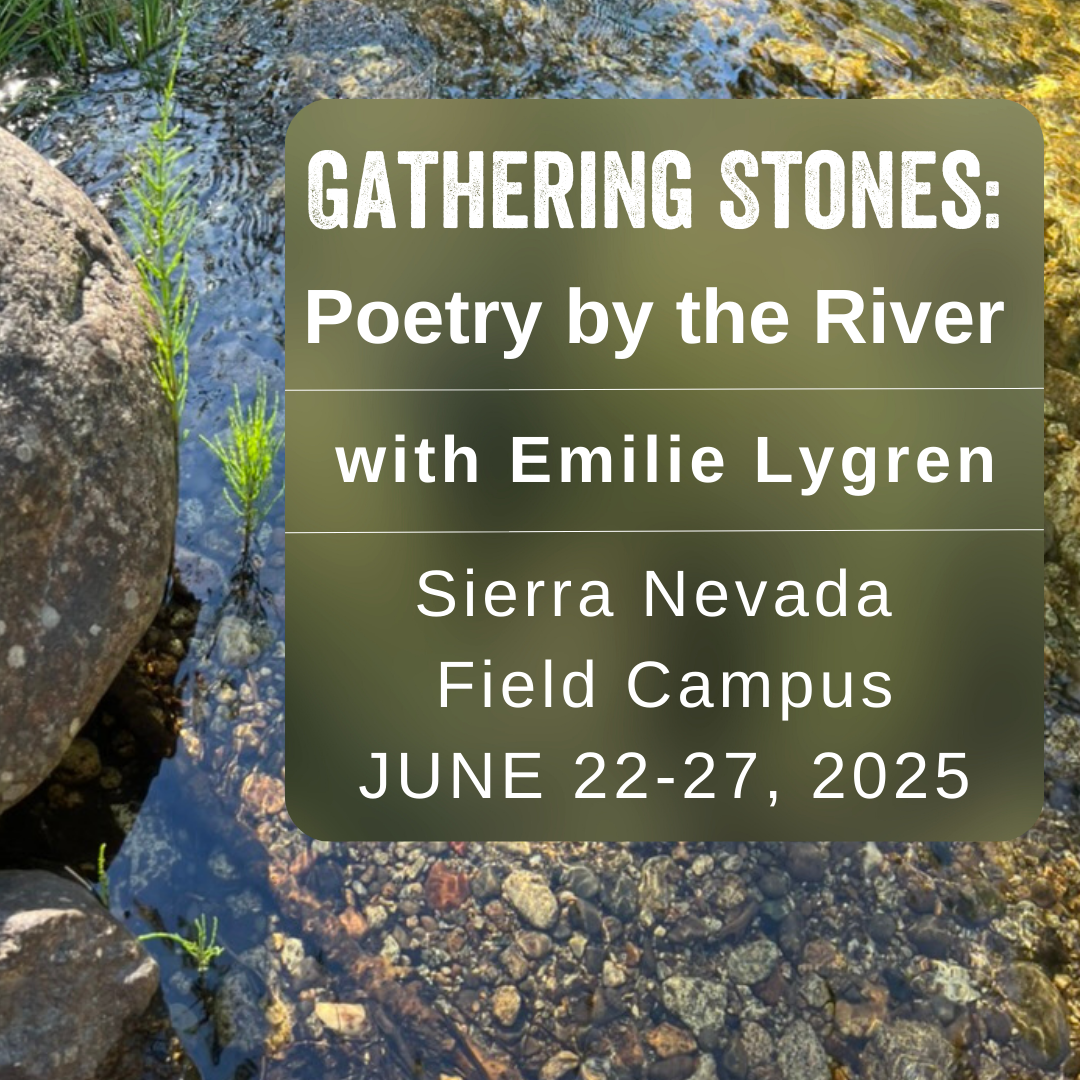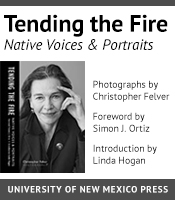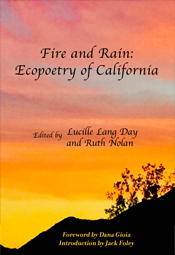POETRY AND HEALING
Natalie Diaz's "Postcolonial Love Poem"
by David Shaddock
This regular column for Poetry Flash looks at poetry to illuminate issues relevant to health, mental health, and coping with our lives today.
WHAT IS POETRY which does not save / Nations or people? asks Czeslaw Milosz, surveying the destruction of Poland in 1944. Is he extolling the possibility for poetry to save us or lamenting its impossibility? Perhaps both. Milosz's poem, "Dedication," ends up by invoking poetry as a kind of spell or magic. Instead of the millet peasants leave on graves to keep the dead from haunting us, Milosz leaves his book of poems: "I put this book here for you, who once lived / So that you should visit us no more."
My column today is about the Native American poet Natalie Diaz's "Postcolonial Love Poem" which similarly uses poetic magic to address a legacy of war and violence. It is from her eponymously titled 2020 collection. The tools of her magic are stones, plants, erotic love, a touch of Latin American surrealism and the breathtaking speed of her poetic thinking. For those who would like to follow this discussion, here is a PDF of the poem: tile.loc.gov/storage-services/service/afc/afc2020004/afc2020004_37/afc2020004_37_ms01.pdf.
"I've been taught bloodstones can cure a snakebite," the poem begins. Diaz, a native Mojave and enrolled member of the Gila River Indian Tribe invokes her own healing traditions. A search of bloodstone yields a poet's treasure trove of synonyms: jasper, chalcedony, heliotrope (which shows up later in the poem as a desert plant.) Several sites mention bloodstone's traditional use in lithotherapy—a new word to me. But then a turn in the second line: "can stop the bleeding…" Hold on. Snakebites don't really bleed. First aid for snakebites used to be to induce them to bleed. We're talking about another kind of wound, from millennia of war and oppression.
Here are the poem's first seven lines:
I've been taught bloodstones can cure a snakebite,
can stop the bleeding—most people forgot this
when the war ended. The war ended
depending on which war you mean: those we started,
before those, millennia ago and onward,
those which started me, which I lost and won—
those ever-blooming wounds.
This is the kind of density that induces giddy vertigo. No paraphrase will suffice, so I'll just try and note the many turns and seeming contradictions. There is no simple dialectic here between the personal and the historical. The personal becomes part of the collective guilt: the wars "we started" while an individual self emerges from the wars "which started me." Though "most people forgot this / when the war ended," the wars never really end. The wounds are "ever-blooming." This is what the magic of the poem is arrayed against: the wars and wounds are inflicted from history, but they are also inside us, and we are implicated in them. One association I had to the legacy of millennia of war " which started me" was to read "started me" as a poet, and to think of the Iliad, the war poem that started so much of our poetry. Violence is in us and all around us, Diaz is saying. It takes magic, several forms of it, to separate ourselves from it.
The poem now turns on a series of martial verbs: wage, march, dismount, deliver. But these verbs are transposed from the battlefield to her lover's body: "We pleasure to hurt, leave marks / the size of stones." Stones which, within the magical lexicon of the poem, have the power to cure, to heal— "cabochons" (another lookup) smoothed but not cut or faceted. Here's a list of the stones that Diaz invokes: bloodstones, jaspers, geodes, feldspar, diamonds, quartz. All crystals. I am reminded of ideas from the sixties and seventies when poetic practice was explicitly connected to magic. At workshops with Diane di Prima on Tomales Bay we studied the specific properties of different crystals. Now—when we find ourselves again on the cusp of something marvelous or terrible—I welcome Diaz's return to such poetics.
Plants populate the poem as well. Desert plants of the Mojave: wildflowers that take twenty years to bloom, as well as heliotrope, scorpion weed, blue phacelia. The names of these gems and plants are like an antistrophe in a Greek drama to the invocation of the hurts and pleasures the poet and her lover perform on each other.
One way to understand the poem is to see it as a melding or superimposition of different landscapes or geographies: the desert, a field of war, the lover's body. There is the "cannon flash of your pale skin," the lover's hips are "quartz-light and dangerous." These overlapping landscapes are all the field of eros. The poem is a prayer for the healing power of love, but it is also an acknowledgement that the erotic is inseparable from our histories of violence and oppression. The desert is harsh and dry, but it also holds the promise of reawakening. "Wake up and ache for your life," the god of the rarely blooming desert plants whispers to the lover. A dry arroyo fills with water, a hundred-year flood. The lover's hands "are diamonds / on my shoulders, down my back, thighs." War and violence are part of the erotic field: "we pleasure to hurt, leave marks the size of stones." We are aware as well of the implied violence of homophobia that surrounds this poem of lesbian love.
You have great hands, one lover says to another, and Diaz flips this notion to the great hands of an earth spirit, holding a purple flower. But will love hold us, hold off the threats of violence and ecological breakdown? Diaz is noncommittal: "The rain will eventually come, or not." Here are the last two lines:
Until then we touch our bodies like wounds—
the war never ended and somehow begins again.
I find myself consoled by the poem's refusal to offer false hope. Rain and drought, war and peace. Love wounds, and love heals. I invite you to view the final period of the last line more as an ellipse, and linger for a moment in the spirit of tender endurance the poem evokes. ![]()
David Shaddock PhD is a poet and psychotherapist. His recent poetry book is A Book of Splendor: New and Selected Poems on Spiritual Themes. He is also the author of Poetry and Psychoanalysis: The Opening of the Field, from Routledge, and two books on relationships and couples therapy. He lectures widely on those topics, and maintains a private practice in Berkeley.
— posted DECEMBER 2022





































